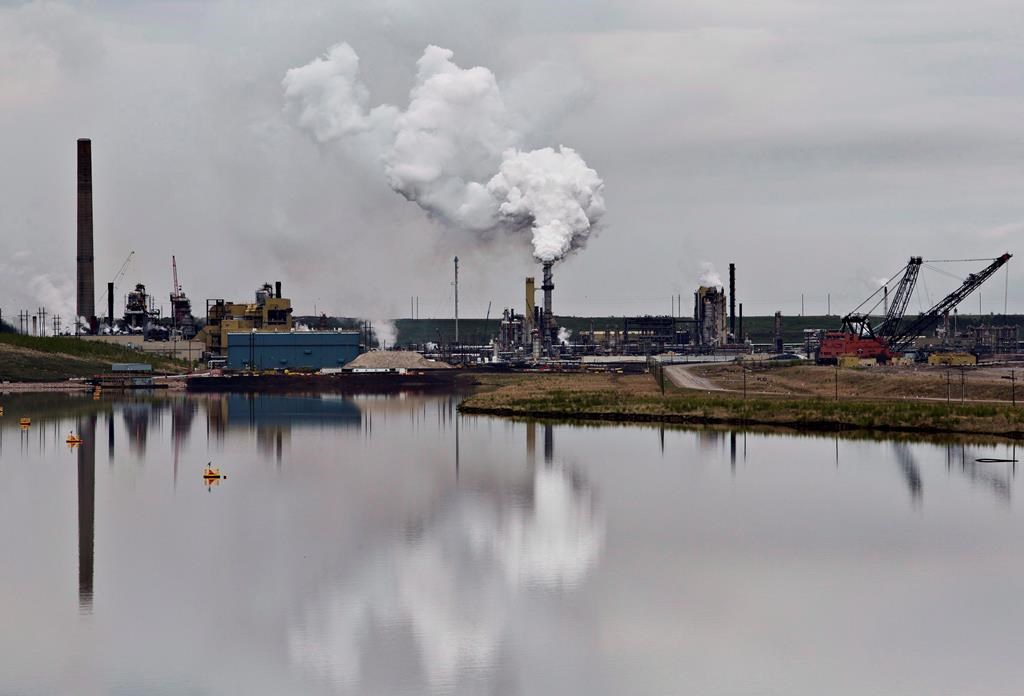New federal research suggests greenhouse gas emissions from Alberta’s oilsands may be significantly higher than industry reports.
In a study published Tuesday, Environment Canada scientists say four major oilsands mines are releasing an average of about one-third more carbon dioxide per barrel of oil than they report — a crucial number used for everything from determining national emissions levels to calculating carbon tax.
Lead author John Liggio and his colleagues analyzed air monitoring samples captured in a series of 13 flights above the four sites over the course of a month in 2013.
Spokesperson for Suncor, Erin Rees said that the company supports new technology in emissions monitoring.
“The better the data on our emissions, the better we’re able to tackle and reduce those emissions.”
Suncor’s facility was 13 per cent over its estimate.
But the intensity of Canadian Natural’s Horizon and Jackpine mines averaged 37 per cent higher than they reported.
Syncrude’s Mildred Lake mine was emitting two-and-a-quarter times more of the climate change-causing gas than it told Ottawa’s pollutant registry.
Public Affairs Specialist, Leithan Slade said Syncrude was able to provide feedback to the authors of the report and that the company has reduced it’s overall emissions by around 10 per cent between 2013 and 2017.
“We recognize that our operations to contribute to GHG emissions in Canada and we have and will continue to work to reduce emissions intensity. Examples of that are improvements in energy efficiency, process reliability as well as reducing flaring and venting at our operation.”
He added that Syncrude uses the “bottom-up” measurement method which is based on a combination of some ground measurement and mathematical modelling.
“Syncrude has always passed our annual government audits which I think demonstrates out compliance with those provincial regulations.”
The method is used across the industry and then audited by the Alberta government.
The new study is the first to use actual field measurements taken from aerial overflights, or top-down measurements.
The findings of industry underestimation echo those of a previous Alberta study, which found methane emissions from heavy oil facilities were much higher than thought.
They also agree with many other studies that have compared bottom-up to top-down.
“There’s still more work to be done,” Liggio said. “But I will say there are many, many studies using top-down approaches which have also shown that top-down (measurements) are generally higher.”
The measurements in Liggio’s paper include emissions from mining, processing, upgrading and tailings ponds.
Industry has criticized such flyover measurements for only providing a snapshot of emissions instead of long-term data.
Liggio defends his work, saying that measuring emissions against oil production evens out sudden spikes resulting from higher output.
He said his team is currently analyzing data from similar overflights conducted to measure oilsands emissions in two different seasons.
Industry has had a chance to comment on the paper, said Liggio.
“Generally, industry was positive and supportive. They do want to work together to get to the bottom of where the discrepancies are coming from.”
Liggio said the apparent problem at the four sites in the current paper could point to an issue throughout the industry.
He adds the apparent underestimates occurred despite the fact the mines studied were using strict United Nation’s measurement protocols.
Researchers don’t yet understand why top-down measurements tend to be so much higher than bottom-up estimates, Liggio said.







